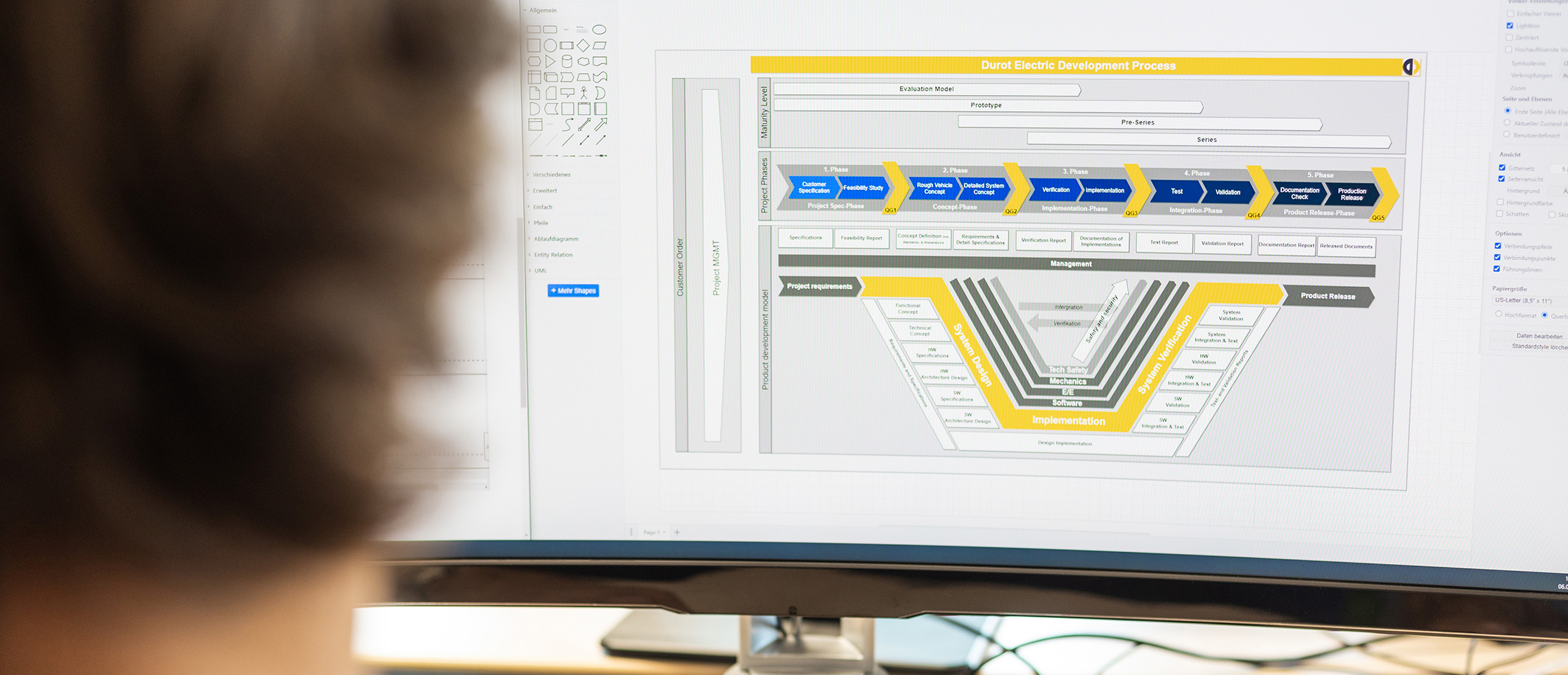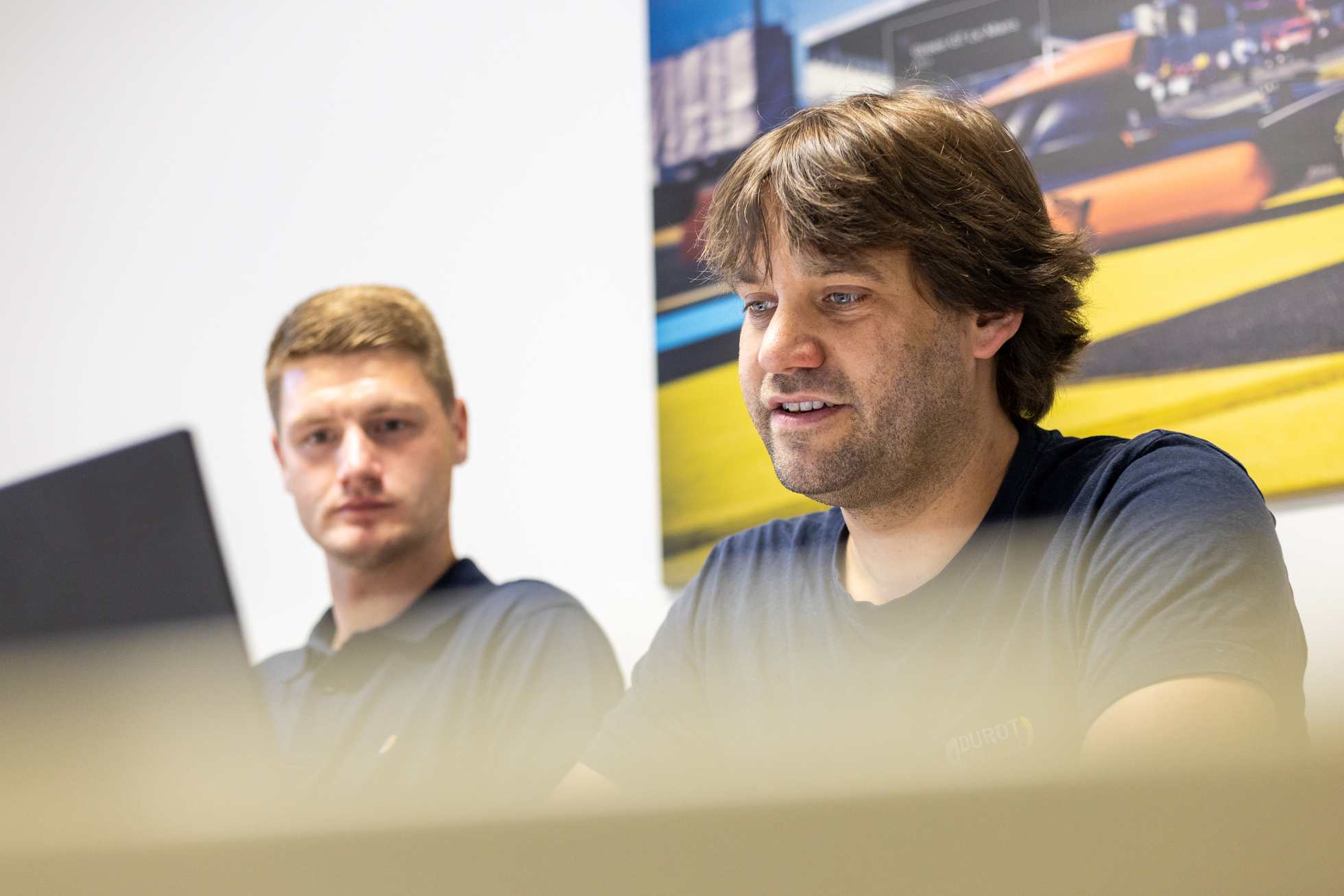Safety Layer Vehicle Control Unit
Industry solutions
Safety Layer Vehicle Control Unit

The Vehicle Control Unit (VCU) including Safety Layer simplifies your everyday development work. Thanks to an integrated safety level, you focus on the control of components and special applications. The necessary foundation is provided by the Safety application from Durot Electric.
Frequently asked questions
For the safe
Development of electric vehicles
Vehicle control with safety level
The Safety Layer Vehicle Control Unit comprises the complete hardware and software for vehicle control. The complete package offers numerous advantages.
01.
Integrated safety level
Thanks to the special architecture, the application and security levels are separated. You take care of vehicle control, we take care of safety functions.
02.
Shorter time-to-market
While your competitors are working on standards and expanding QM, you are developing functions that are crucial for the vehicle and its market success.
03.
Individual development
When developing vehicle variants or customization, no revalidation of the safety layer is necessary. You develop according to QM instead of ISO26262.
Advantages for your development department
Software architecture and specifications
Special feature of the VCU architecture
The QM application and Safety application are separated into two levels. The OEM focuses on the application level and its value creation Design and coding of the QM application is done entirely by the OEM Durot Electric provides the foundation with the safety application. The VCU basic software includes the operating system as well as the services for the application. Allows developer support and joint developments.
Are you planning to use our VCU including safety layer?
Count on our support. Using optional hardware-in-the-loop testing (HIL), we find errors before they become significant. Thanks to prior simulations, we thus ensure a minimum time-to-market, optimal software quality and mill-free commissioning.

